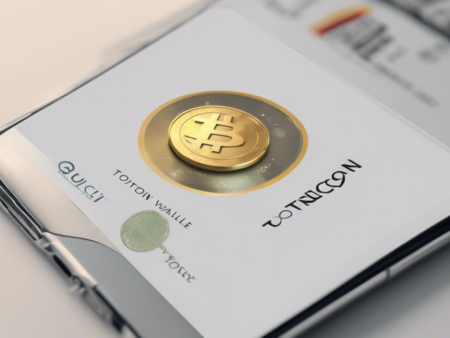The modern blockchain industry created one of the most complicated financial markets in history in terms of sheer diversity of interconnected assets and technological complexity. A modern AI crypto trading bot is an elegant solution to this chaos. Many retail traders prefer using fully automated AI-assisted trading systems to achieve consistency and monetize their analytical strategies.
Interestingly, it was something inconceivable just a couple of decades ago. Let’s talk about the history of automation of AI trading software.
Sommaire
Early years of algorithmic trading
General outlines of algorithmic approaches to trading were toyed with centuries ago. There are accounts of people using various systems to work through the momentary tulip bubble and make money in a very volatile financial environment. Great minds had been trying to “crack” the code of algorithms and rules that would later lay the groundwork for the future of AI bots for trading.
First concrete ideas about employing algorithms to build complex investment strategies were developed in the end of the 1960s with several financiers and mathematicians working with the representatives of the New York Stock Exchange to create the famous DOT system (designated order turnaround) which was a highly specialized routing system increasing the speed with which orders were communicated to floor traders.
While DOT and, later on, SuperDOT were not automatic trading or investment systems, they laid the infrastructural foundation upon which better ecosystems could be built. In some ways, it was an early form of an API (application specific interface) allowing some investors to automate their trading operations and make communications clearer and faster.
With the expansion of the derivatives market by the 1980s, some risk management systems controlled by algorithms were introduced to the financial world. For example, portfolio insurance at NYSE for synthetic put options was a system conceived using the Black-Scholes pricing model widely used by financial analysts during those times. Similar products were offered by other exchanges. The financial community colloquially called them program trading systems.
Significant changes in the 90s
The introduction of ECNs (Electronic Communication Networks), which were closed interconnected computers managing stock trading, was the first step toward making exchanges a little bit more accessible to people outside of the financial world. The change to the tick size reducing it to $0.01 per asset was introduced in 2001 allowing for microtrading and more complex trading strategies that now could incorporate actual automation.
First glimpses of an AI investing bot were imagined by the team of researchers at IBM who published a paper on using artificial intelligence for electronic auctions closely resembling the infrastructure of many financial markets. In 2001, two systems were strongly competing for the spotlight: IBM’s MGD and HP’s ZIP). Both had a long history (at least 10 years by the moment of wider adoption) and demonstrated that automated systems outperformed human traders on average.
The further development of future AI day trading and microtrading bots was defined by the overall expansion and growth of the internet and the creation of new fully electronic trading ecosystems. For example, Forex was moving to the online environment rapidly with many brokers embracing the opportunity to use various tools allowing for faster traders and more complex trading systems. By 2005, the Regulation National Market System was developed by the SEC to combat brokerage platforms that were benefiting from price differences occurring in the market when traders placed orders at prices that were not optimal.
The new system was designed to enforce the “trade through rule” which made it impossible for retail traders to place orders at suboptimal prices (worse than the best available price at the current time) creating a more controllable space for everyone.
Many brokers leveraged the power of more interconnected electronic trading environments and introduced new algorithmic strategies like Chameleon produced by BNP Paribas or Sniper and Guerilla by Credit Suisse. Many of these systems allowed investors to use highly complicated approaches to trading such as statistical arbitrage or mean reversion which were previously used only by experienced specialists and large teams of professionals.
In 2009, high-frequency trading powered by early automation systems accounted for at least 60% of equity trading volume. The number dropped a little by 2012 reaching 50%, but started gradually rising back to higher metrics throughout the next decade. The biggest adopter of automation was the Forex market with over 80% of all orders being placed by various forms of ATS.
The era of AI cryptocurrency trading
By 2015, the financial world was all about jumping on the crypto hype train with many huge financial institutions dipping their fingers in the growing cryptocurrency pie. Some of the biggest hedge funds started using $BTC to balance their portfolios (J&P Morgan and Fidelity Investment). However, the expansion of the crypto market was the perfect opportunity for the DeFi fintech industry to invest in developing new automation products.
For example, platforms like WunderTrading started offering interesting products that were fully automated in 2018. The company spearheaded some sectors of the trading automation industry and expanded its portfolio gradually to introduce new features that closely resemble AI-controlled trading software. Automatic DCA buying, GRID bots, statistical arbitrage systems and more became widely available to individual retail traders during the period from 2015 to 2024.
There are several reasons why AI crypto trading bots are so popular with modern investors:
-
Computers do not have weaknesses like emotional instability or fear. Many human traders fail to perform at their peak level due to stress or anxiety. Fear and hesitation often lead to suboptimal or even counterproductive investment decisions which is not a good thing when you are using a technical trading algorithm that requires traders to strictly follow its rules.
-
A Bitcoin AI trading bot does not need to sleep or rest. One of the biggest advantages of the contemporary interconnected global financial market is also a huge problem for a human trader. To identify good moments to enter the market, you need to be present around the clock which is physically impossible for any person. Robots do not need to eat, rest, or sleep. They work 24/7 if you have a stable internet connection and no power outages.
-
Artificial intelligence is continually improving. AI systems are growing in complexity while using enormous amounts of information to learn and improve. It means that sooner or later, they will not only outperform human traders but will be so powerful that anyone who does not want to use them will fall behind dramatically. Learning how to use contemporary AI systems, even if they are incomplete, is hugely important for everyone!
The future of the cryptocurrency market is tightly connected to the development of the automation industry. It is imperative to use the most advanced systems simply to stay up to date with the latest trends!
In conclusion
Automated trading systems came a long way from the early days of rudimentary electronic communication systems at stock exchanges to AI-assisted trading strategies available to all individual traders.




